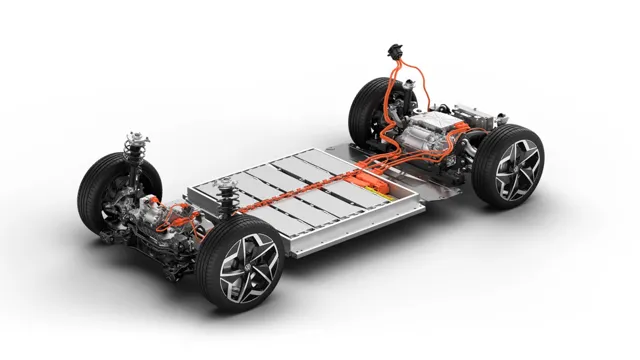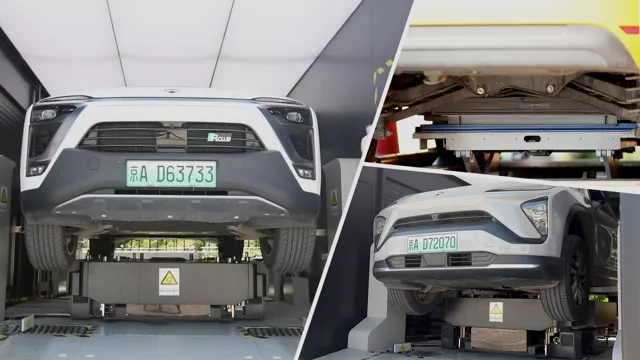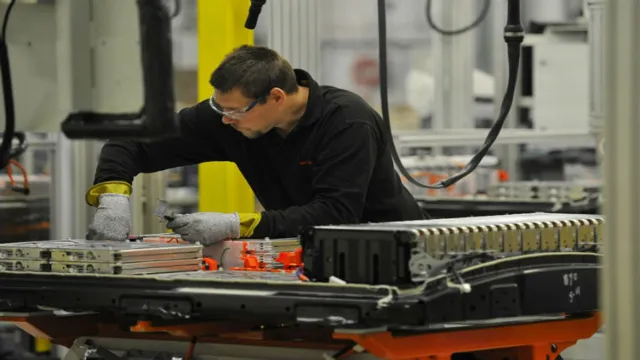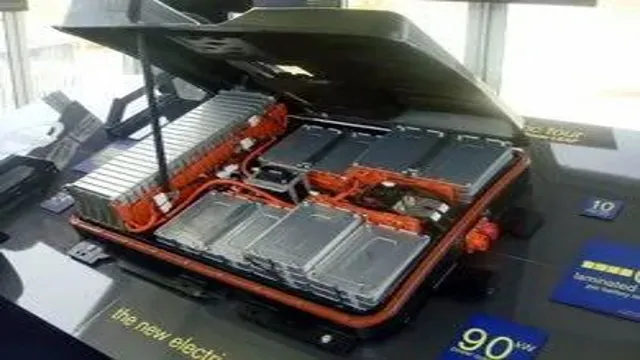Do Electric Cars Lose Battery Life When Parked? Understanding the Myth and Reality
Are you considering buying an electric car? With the increasing global focus on climate change, the demand for eco-friendly alternatives to gas-powered vehicles is on the rise. Electric cars are quickly gaining popularity as more people look for ways to reduce their carbon footprint. However, one of the biggest concerns surrounding electric cars is their battery use.
How long do electric car batteries last? What is the cost of replacing the battery in an electric car? In this blog, we will explore the use of batteries in electric cars and address any concerns you might have about owning an electric vehicle.
Battery Drain in Parked Electric Cars
One of the concerns that potential electric car buyers may have is whether the vehicle uses battery when not in use. The simple answer is yes, electric cars do use battery when parked and not in use. This is because the car’s onboard computer system and sensors need a constant source of power to monitor and control vehicle functions, as well as to maintain the battery’s state of charge.
However, the amount of battery power drain will depend on factors such as the make and model of the vehicle, as well as the age and condition of the battery. To minimize battery drain, it’s recommended to keep the electric car plugged in when not in use, especially for long periods, to allow the battery to charge and maintain its optimal state of health.
Factors That Affect Battery Drain
Battery drain is a common problem for electric cars, especially when they are parked for extended periods. There are several factors that contribute to battery drain, including the age of the battery, weather conditions, and even the car’s location. If your electric car is parked in an area with no access to a charging station, the battery will continue to deplete until it is completely dead.
This is why it is essential to keep your electric car charged and avoid parking it for long periods without charging. Additionally, other factors such as the car’s alarm system or electrical components can also contribute to battery drain. It is essential to ensure that all electrical components are switched off and disconnected when parking your electric car for an extended period.
By taking these precautionary measures, you can prolong the life of your electric car’s battery and avoid unexpected battery failures while parked. So, always be mindful of your electric car’s battery life to ensure that it is ready to go whenever you need it.
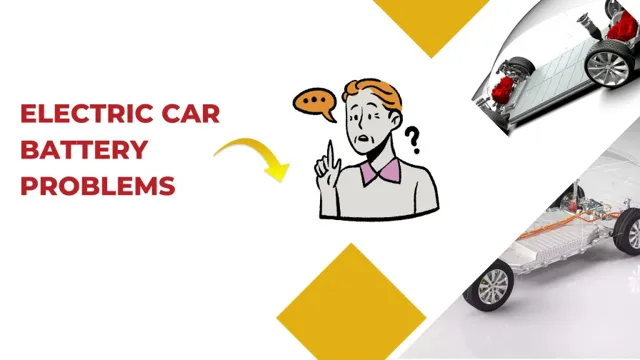
A Look into Standby Power Usage
Battery Drain in Parked Electric Cars When an electric car is parked, it’s not entirely motionless, as it still requires electricity for standby power. Standby power is the energy used to operate the vehicle’s electronic systems, such as the alarm, the remote unlocking feature, or the climate control system. While this may not seem like a lot of power, standby power usage can add up and quickly drain the vehicle’s battery, resulting in a reduced driving range and potentially leaving the driver stranded.
In addition, some electric cars may also be subject to battery drain from external sources, such as weather or a faulty charging station, which can compound the issue. In order to prevent this from happening, it’s essential to monitor the vehicle’s battery levels when parked and to minimize the use of any unnecessary electronic systems.
How to Avoid Battery Drain
Many electric car owners have probably wondered, “do electric cars use battery when not in use?” The answer is yes. Even when your electric car is not in use, it will use some of its battery power. This happens due to a phenomenon called “vampire drain,” which refers to the small amounts of energy that are lost whenever the car is not plugged in and charging.
Fortunately, there are a few ways to mitigate this problem and avoid coming back to a dead battery. One option is to keep your car plugged in when you’re not using it. This will allow the battery to remain charged and prevent it from losing energy.
Another option is to turn off any unnecessary features, such as climate control or Wi-Fi, which can drain the battery even when the car is not in use. By taking these simple steps, you can ensure that your electric car is always ready to go whenever you are.
Best Practices When Parking Your Electric Car
When parking your electric car, there are a few best practices to keep in mind to avoid battery drain. One important tip is to avoid leaving your car plugged in for extended periods, as this can cause the battery to overheat and potentially damage it. Another helpful practice is to park in a shaded or cool area, particularly in hot weather, to prevent high temperatures from accelerating battery degradation.
Additionally, be sure to turn off any unnecessary electronics or features before leaving your car parked, such as the air conditioning or infotainment system, as these can drain the battery even while the car is idle. By following these simple guidelines, you can help prolong the life of your electric car’s battery and ensure optimal performance.
Using Battery Saver Mode
As our phones become an essential part of our daily routine, we are always looking for ways to improve their battery life. One of the most effective ways to optimize the battery usage is by using Battery saver mode on your phone. This feature is available on many smartphones and allows users to extend the battery life by restricting the background process, reducing screen brightness, and disabling unnecessary features like location services.
By enabling this mode, you can ensure that your phone battery lasts longer, especially when you’re away from a power source.
But, What exactly is Battery Saver Mode? Essentially, it is a Battery optimization feature that conserves your phone’s battery life by limiting the usage of various apps that are running in the background. This feature disables specific features like push notifications, location services, and other battery-intensive features that you may not require at the moment.When you enable Battery Saver Mode, your phone’s battery usage is significantly reduced, and the phone saves power by minimizing the CPU and GPU usage. In conclusion, utilizing Battery Saver Mode can undoubtedly help in avoiding battery drain. You can turn it on manually or set it up to turn on automatically when the battery level reaches a certain point.
This simple feature can prolong your phone’s battery life and provide you with more screen-on time. Plus, it’s an easy way to save power and avoid the frustration of running out of juice in the middle of the day. So, go ahead and give it a try, and you will be pleased with the outcomes.
Installing Smart Charging Systems
Installing smart charging systems is an excellent way to ensure you never run out of power, but it’s important to be aware of the potential risks of battery drain. A common mistake that people make is leaving their devices plugged in all the time, even when they don’t need to be charging. This can lead to what’s known as “trickle charging,” where the batteries are constantly being topped off, which can actually cause them to lose capacity over time.
To avoid this, it’s important to make sure your devices are only charging when they need to be. By using smart charging systems that monitor the battery level and adjust the charging rate accordingly, you can ensure that your devices are always charged when you need them, without risking damage to the batteries. So, if you want to stay powered up and avoid battery drain, make sure to invest in a smart charging system that can keep up with your needs.
Conclusion: Battery Management is Key
Well, it’s like asking if a refrigerator uses electricity when the door isn’t open – technically it still does, but it’s only a small trickle to maintain functionality. Similarly, electric cars will still use a bit of battery power when not in use to power the various computer systems and ensure they’re ready to go when you are. However, with proper care and maintenance, this level of energy usage should be a mere blip on the radar compared to the overall efficiency and environmental benefits of electric vehicles.
So the short answer is yes, electric cars use battery when not in use, but it’s nothing to lose sleep over!”
Optimizing Battery Life for Your Electric Car
When it comes to electric cars, one of the most important factors to consider is battery life. Optimizing your battery life can help you save money and reduce your environmental impact, but it’s not always as simple as just charging your car regularly. To avoid battery drain, there are a few things you can do.
First, avoid extreme temperatures and try to keep your car parked in a cool, shaded area. This can help prevent unnecessary battery usage. Another tip is to avoid flooring the accelerator pedal or driving at high speeds for long periods of time, as this can quickly drain your battery.
Finally, make sure to regularly maintain your car’s battery system to ensure it’s working efficiently. By following these simple tips, you can optimize your car’s battery life and get the most out of your electric vehicle experience.
Future Developments in Electric Car Battery Technology
As electric vehicles continue to gain popularity, researchers are working hard to improve battery technology. One of the biggest concerns for electric car owners is battery drain, which can be caused by a variety of factors including cold weather, heavy use, and driving at high speeds. To avoid battery drain, it’s important to make sure your car is charged to its maximum capacity and to avoid excessive use of heating, air conditioning, and other accessories.
Another way to prevent battery drain is to keep your car’s battery at a moderate temperature by parking in a garage or in the shade during hot weather. In the future, researchers are working on developing batteries with higher energy densities, faster charging times, and longer lifespans, which could make electric cars even more efficient and practical for everyday use. With these advancements, we could see electric vehicles become the norm rather than the exception, greatly reducing our reliance on fossil fuels and helping to combat climate change.
FAQs
Do electric cars use battery when not in use?
Yes, electric cars use a small amount of battery even when they are not in use. This is because the car’s electronics, such as the security system, need a constant source of power.
Should electric car owners fully charge their batteries before parking their car for an extended period of time?
Yes, it is recommended to fully charge the battery before parking the car for an extended period of time. This helps maintain the battery’s health and prevents it from fully discharging.
Can electric car batteries be damaged by extreme temperatures while the car is parked?
Yes, extreme temperatures, both cold and hot, can damage electric car batteries while the car is parked. It is best to park the car in a temperature-controlled environment if possible.
How long can an electric car battery last?
The lifespan of an electric car battery depends on many factors, including the quality of the battery, driving habits, and maintenance. However, most electric car batteries are designed to last at least 100,000 miles or 8-10 years.
